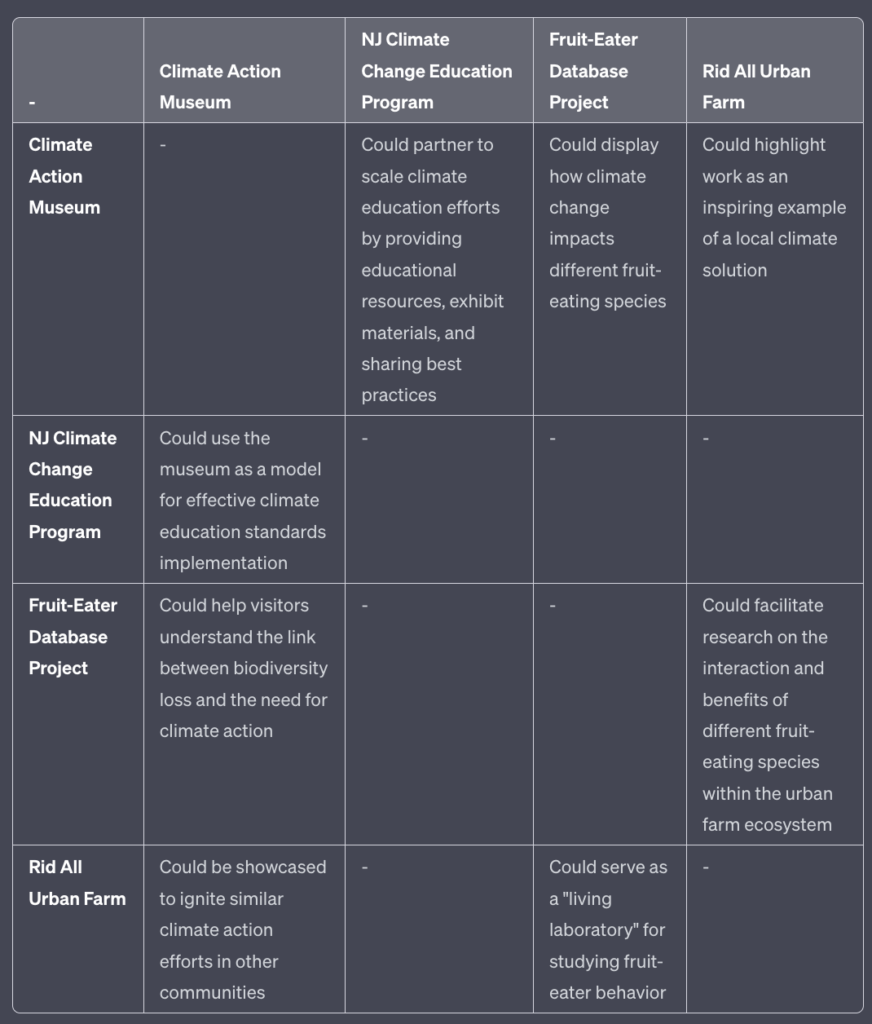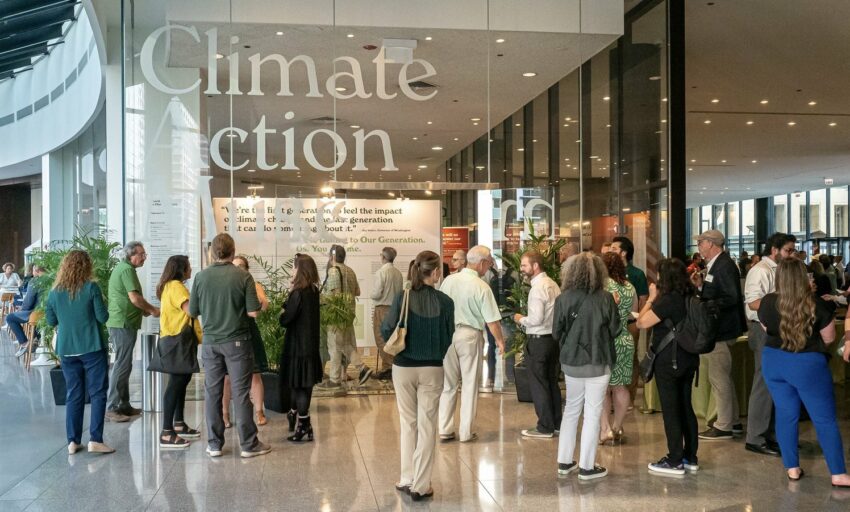Energize your week with some inspiring climate solution news in the areas of education, conservation, and food. Plus, we’ve added some analysis on how these stories could strengthen one another through collaboration. Check it out below and let us know what you think!
Chicago museum inspires climate action through education and conversation
Chicago’s free popup Climate Action Museum, now one of seven climate museums in the world, opened in June 2023 and aims to inspire climate mitigation in the Chicago region through education, conversation, and direct action in our everyday lives. The museum holds docent-led discussions, an exhibit that explores the evolution of area buildings and their climate impacts, a quiet area that asks visitors to pledge how they can make a difference moving forward, and a list of actions people can take so they leave empowered.
K-12 schools incorporate new climate change education standards in New Jersey
New Jersey is the first U.S. state to require that climate change be taught to everyone from kindergarten through 12th grade. The topic is woven into lesson plans across most subject areas, including social studies, world languages, and physical education. The standards are designed to help children connect with what is going on in the natural world around them as well as feel empowered to talk about locally relevant solutions. As of February 2023, schools are now eligible for state grants to support educators as they develop local initiatives, ideas, and classroom-specific lessons.
Supersized fruit eater database supports efforts to protect biodiversity hotspots
Scientists and students at Michigan State University created an open, accessible, and supersized database that keeps track of 45,000+ traits for fruit-eating species. The project provides researchers, community scientists, and conservationists a one-stop resource to better understand and monitor frugivores, who play a vital role in seed dispersal and forest health maintenance.
Former dumping ground now a flourishing food ecosystem
Three childhood friends who grew up in Cleveland, Ohio turned an illegal dumping ground into a thriving food ecosystem. Creating their own soil to replace the lot’s contaminated soil, they started the nonprofit Rid All and established a circular economy. The org trains and provides jobs for community members, turns farm waste into compost, has a self-sustaining hydroponics system, and supports a community kitchen and farmer’s market. Rid All was also named the official tree nursery site of the Cleveland Tree Coalition and will be growing at least 5,000 trees over the next few years as part of a larger effort to reforest the city.
Imagine These Potential Connections
Utilizing the AI model Claude, from AI safety and research firm Anthropic, we’ve synthesized different ways these programs could come together to make the whole greater than the sum of its parts.
1. The Climate Action Museum and New Jersey climate change education program could partner to provide educational resources, exhibit materials and best practices to scale climate education efforts. The museum could serve as an inspiring model for how to implement climate education standards effectively.
2. The fruit-eater database project and Rid All regenerative urban farm could collaborate to research how different fruit-eating species interact with and benefit the urban farm ecosystem. The database could be used to identify key species to attract and the farm could serve as a “living laboratory” to study fruit-eater behavior.
3. The fruit-eater database and Climate Action Museum could partner to showcase how different fruit-eating species are impacted by climate change. This could help visitors make the connection between biodiversity loss and the need for climate action in a compelling and concrete way.
4. Rid All’s urban farm and the Michigan State fruit-eater database could collaborate on research investigating the role of fruit-eaters in improving soil health and nutrient cycling within urban agricultural systems. The insights gained could help optimize the farm’s regenerative approach.
5. The Climate Action Museum could partner with all of the projects to highlight their work as inspiring examples of local climate solutions in action. The museum could help amplify the impact of these grassroots initiatives by showcasing them to a wider audience and sparking similar climate action initiatives in other communities.
Check out these intersections in table form:


